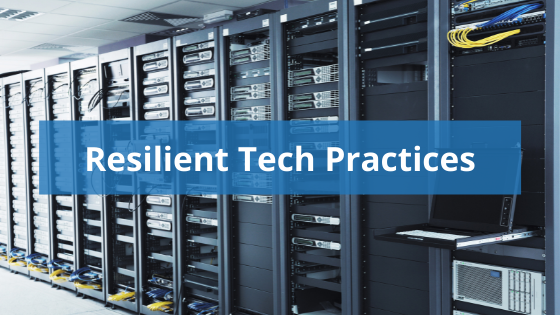A major part of any good Disaster Recovery or Business Continuity Plan is having a strong IT infrastructure in place. Your technology, like your business, needs to be resilient and able to face a variety of challenges from hardware issues to cyber-attacks or user errors. In this post we want to outline the basic requirements for IT resiliency and explain why they are critical to your business.
Identifying risks: When it comes to technology there are many threats that can cause a disruption, including the ways your staff use technology. It’s important that your IT team works with other aspects of your business to understand what is critical, how systems are used, and where there are vulnerabilities.
Quick detection: 24/7 monitoring allows your IT team to know when a system is down quickly, which means they can begin working to remediate the problem sooner. This plays a major part in getting your organization up and running with minimal disruption.
Remediation and recovery: Keeping critical systems running and getting operations back on track quickly is essential. This means that your IT team must be able to identify the problem, work on a solution, and recovery any lost data from backups to help you get back to work.
Follow-Up: Once remediation and recovery are done, it's important to continue assessing what happened and why. This will help identify any issues in your systems and help prevent future disruption. Without further investigating issues after an incident you risk overlooking vulnerabilities that could cause further disruption in the future.
By ensuring that your business and technology needs are aligned and implementing an adaptable technology strategy you can have peace of mind that your operations will not be shut down after a critical incident. Work with your IT team to make sure you are ready for any challenge and have a technology stack that is reliable and secure. If you need help with your technology, please contact us. Tech Networks of Boston is here to help your organization through technology challenges and changes.





Leave a Reply